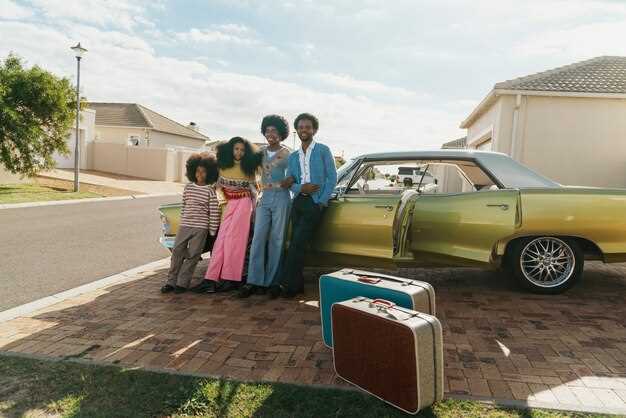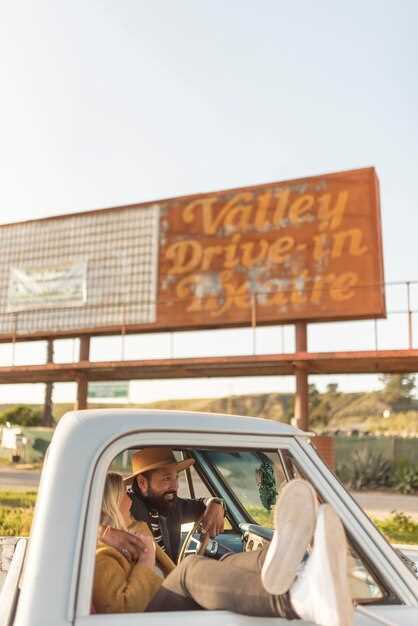
Embarking on a road trip in a classic car is not just about the destination; it’s an experience steeped in nostalgia and freedom. The rumble of a vintage engine, the wind in your hair, and the open road ahead create a unique sense of adventure that few can replicate. However, to ensure this journey remains a cherished memory rather than a series of unfortunate mishaps, planning is key.
First and foremost, preparation is essential. Classic cars, while beloved, often require more attention and care than modern vehicles. Conducting a thorough check-up before hitting the road can save you from potential breakdowns. This includes inspecting the engine, brakes, tires, and fuel systems to guarantee your ride is as smooth as it was when it first rolled off the assembly line.
In addition to mechanical considerations, creating a flexible itinerary can enhance your trip. Popular routes like the Pacific Coast Highway or Route 66 offer breathtaking views and historic landmarks, but taking the time to explore lesser-known paths can lead to unexpected adventures. Embrace the spontaneity of the journey and allow for detours that could unveil hidden gems along the way.
Lastly, ensuring you have all the necessary supplies will keep your adventure worry-free. Pack essentials like tools for minor repairs, a first-aid kit, and plenty of snacks and beverages. Additionally, don’t forget to bring along a camera to capture the moments you’ll want to reminisce about long after the trip is over. With these tips in mind, you’re well on your way to crafting not just a road trip, but a memorable story to tell for years to come.
Choosing the Right Route for Scenic Views and Stops
Selecting the ideal route for your classic car road trip significantly enhances the overall experience. Opt for scenic byways and roads renowned for their picturesque landscapes rather than taking the fastest highways. Regions with natural beauty, such as coastal drives, mountain passes, and rural backroads, provide breathtaking views that are bound to enrich your journey.
Before setting off, research and map out routes that feature landmarks, parks, and viewpoints. Websites and resources dedicated to road trips often highlight scenic routes, complete with descriptions of attractions along the way. Traveler reviews can also give insight into the best places to stop and enjoy the surroundings.
Consider incorporating national parks or historical sites as part of your route. These locations not only provide opportunities for stunning photographs but also allow for rest breaks, picnics, or short hikes to stretch your legs. Parking facilities at these sites are often accommodating for classic cars, ensuring your vehicle is secure while you explore.
Weather conditions play a crucial role in your routing decisions. Certain scenic routes may be affected by seasonal closures or adverse weather, so checking forecasts ahead of time can save you from unexpected detours. If possible, travel during the shoulder seasons to avoid heavy traffic while still enjoying pleasant scenery.
Lastly, flexibility can be a key component of enjoying your route. Allow time to explore unplanned stops, whether it’s a charming roadside diner or a unique local attraction. Some of the best memories can come from spontaneous discoveries along the way, adding depth to your adventure.
Preparing Your Classic Car for a Safe Journey

Before hitting the open road in your classic car, thorough preparation is essential to ensure safety and reliability. Start by conducting a comprehensive inspection of your vehicle. Check the engine for any unusual noises or leaks. Ensure all fluid levels, including oil, coolant, and brake fluid, are adequate and top them off if necessary.
Next, examine the braking system. Inspect the brake pads, rotors, and lines for wear. It’s crucial to replace any worn components to prevent potential brake failure during your trip. Additionally, do not overlook the tires. Ensure they are properly inflated and have sufficient tread depth. Checking for uneven wear can also alert you to possible alignment issues.
Pay attention to the electrical system as well. Test the battery, starter, and alternator to ensure they are functioning correctly. Consider replacing the battery if it shows signs of weakness or age. Inspect all lights, including headlights, brake lights, and turn signals, to ensure maximum visibility on your journey.
Another critical aspect is the suspension system. Check for any signs of wear or damage in the shocks and struts. A reliable suspension ensures a smoother ride and better handling. Don’t forget to examine the exhaust system for leaks, which can cause performance issues and contribute to unsafe driving conditions.
Lastly, prepare an emergency kit containing essential tools, spare parts, a first-aid kit, and a roadside assistance plan. Familiarize yourself with the basics of roadside repairs to handle common issues you might encounter. Being well-prepared not only enhances your safety but also ensures your classic car remains a source of joy throughout your memorable adventure.
Packing Smart: Must-Have Items for Classic Car Travelers

Traveling in a classic car is a unique experience that requires careful planning, especially when it comes to packing. Here are essential items that every classic car traveler should consider bringing along for a smooth and enjoyable journey.
1. Emergency Kit: Always prioritize safety by packing an emergency kit. Include items such as a first aid kit, flashlight, jumper cables, tire repair tools, and a basic toolkit. These essentials can help you address minor issues on the road and ensure your travels remain uninterrupted.
2. Spare Parts: Classic cars can be prone to mechanical issues. Carry spare parts like fuses, belts, or hoses that are specific to your vehicle. Knowing what may need replacement can save you from prolonged roadside delays.
3. Road Maps and Guides: While GPS technology is helpful, having physical road maps and travel guides can be invaluable in areas with weak cell signals. They can help you discover scenic routes and local attractions that may not be listed online.
4. Comfortable Clothing: Dress appropriately for long hours on the road. Pack breathable clothing, comfortable shoes, and layers in case the weather changes. Don’t forget sun protection such as hats and sunglasses, especially when driving with the top down.
5. Snacks and Hydration: Keep a stash of snacks and plenty of water in the car. Healthy snacks like nuts, trail mix, and granola bars can help maintain your energy levels during long drives without needing to make frequent stops.
6. Photography Gear: A classic car adventure presents endless opportunities for stunning photos. Bring a camera or a quality smartphone to capture the beautiful scenery and moments along the way. Don’t forget any necessary chargers or extra memory cards.
7. Blankets and Pillows: For travelers planning on extending their road trip or camping, packing a couple of blankets and travel pillows enhances comfort during rest breaks or overnight stays.
8. Entertainment: Long hours on the road can become monotonous. Prepare playlists, audiobooks, or podcasts to keep everyone entertained. Consider a portable speaker to share music and create a lively atmosphere while driving.
9. Classic Car Documents: Ensure you have all relevant documentation, including your insurance, registration, and any maintenance records. In case of any issues, having these documents readily available can facilitate a smoother resolution.
By packing these must-have items, classic car travelers can ensure a safe, comfortable, and memorable adventure on the open road.
